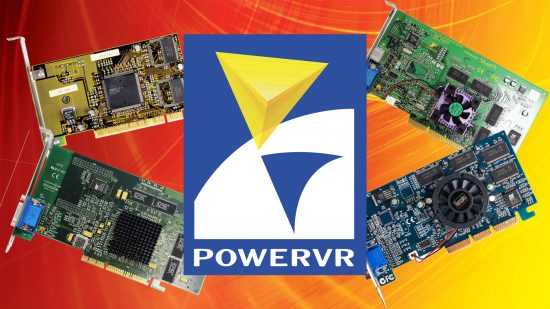Back when PCs were housed in yellowing beige boxes, and Nvidia was just a glint in Jensen Huang’s eye, VideoLogic (now Imagination Technologies, the firm behind PURE radios) started work on the PowerVR PC graphics project. It resulted in some of the first PC 3D accelerator graphics cards and, since then, PowerVR has become a mobile GPU system of choice, found in numerous Android and Apple smartphones.
I headed up to the Imagination Technology HQ in Kings Langley to chat with some of the folks who worked on the original PC PowerVR cards. I’m taken to a meeting room, where a spread of PC relics from the early 1990s to the 2000s is laid out. They include various pre-release boards, as well as some classics.
Where did PowerVR start?
Simon Fenney, PowerVR Research Fellow, picks up the first one – an enormous PCB with a 16-bit ISA interface. ‘The whole PowerVR project started in July 1992,’ he says, ‘and in about early 1993, this first card first came out – it would have been in a 486 PC, so not very good floating point performance.
‘We had a Texas Instruments DSP on there to do all the transform and lighting. This board would later do tile-based deferred rendering, with real-time shadows, and proper 3D volume shadows, but it didn’t have texturing, because it was hard enough to fit that all onto one chip.’
Tile-based deferred rendering is the key to PowerVR. ‘Tile-based rendering and deferred rendering are two separate things,’ explains Kristof Beets, Senior Director, Product Management & Technology Marketing, PowerVR. ‘Most of our competitors today have some form of tile-based rendering. Fundamentally, that means you bucket your geometry, so instead of rendering triangle by triangle, you first sort your triangles and then render each tile.
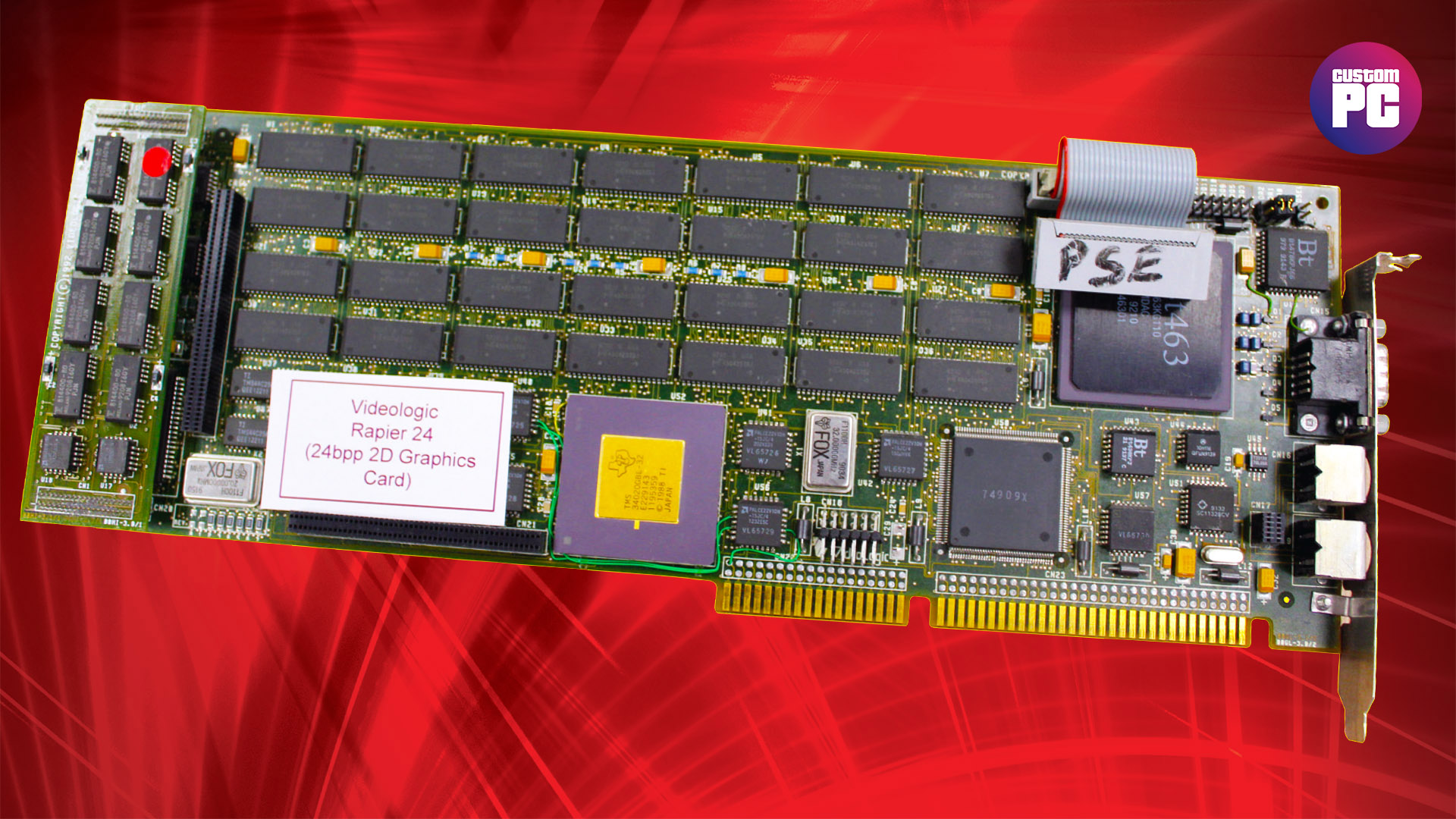
An early ISA Rapier 24 card – the big gold Texas Instruments chip handles transform and lighting
‘The key benefit is local processing. The further your data goes, the more power it uses. If you keep it very tight, it’s much more efficient. Memory loves big transactions, so blasting a tile and loading the texture data for a tile is really effective.’
‘The reason why we’re still so good at tiling is because of all the clever algorithms and data structures that go behind it, which Simon and those guys came up with in the 1990s – it’s how you sort triangles effectively into those buckets.’ Basically, the work done on the early PC 3D accelerators is still useful in smartphones today.
The next part is deferred rendering, a benefit of which is that you can identify objects that are hidden behind other objects before shading them, so you only shade the objects you can see. ‘It’s like painting by numbers,’ says Fenney. ‘Imagine you’re drawing your triangles, and instead of filling in colors you say, “This is triangle 1, that’s triangle 5 and that’s triangle 6.” You then say, “Okay, send those off and fill in all the 1s. Oh what’s the next one? 3 is the next one – do those”, within each tile.
‘If something else is behind you, don’t bother even shading that. If you just have a normal tile renderer, it might be local, but you still end up drawing a car behind something else, and then a wall over the top. Why would you bother spending all that effort? Some other people will sort things so that it works properly, but it’s computationally expensive to sort things.’
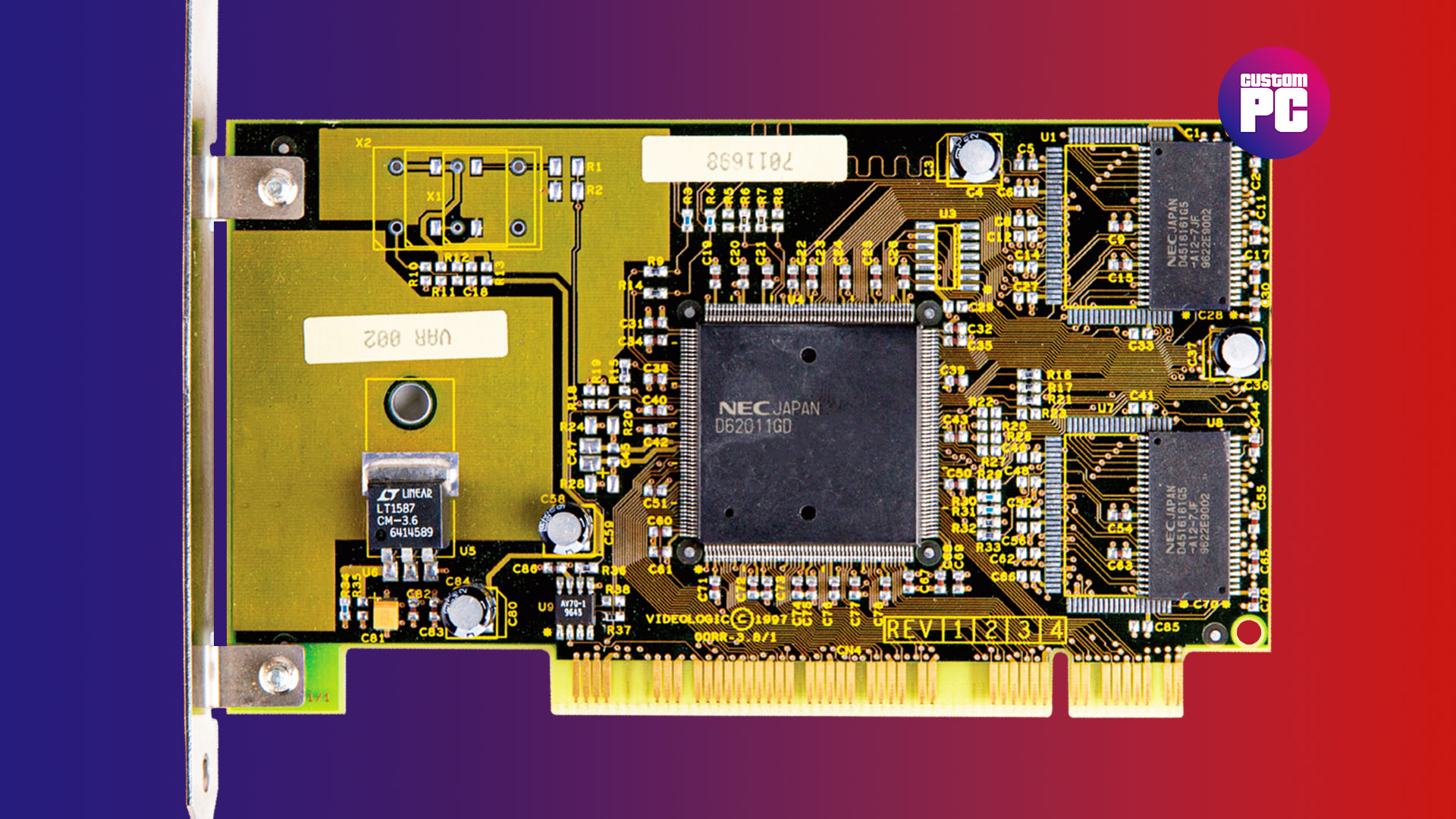
VideoLogic’s Apocalypse 3DX was the first mainstream PowerVR PC 3D accelerator
The first PowerVR PC cards
VideoLogic was initially targeting the arcade market with PowerVR, but as PC tech progressed, the team soon turned to looking at the PC. ‘Thankfully, the Pentium had come along with the PCI bus,’ says Fenney, ‘so we were able to do the transform and lighting on the Pentium. We’d send the models over the PCI bus into the chip, which would then render it. These cards would basically mix the signal coming in from the VGA card.’
The first mainstream product based on this tech was the VideoLogic Apocalypse 3DX. This mixing of the signal was a key part of the PowerVR formula at the time. The first 3dfx Voodoo and PowerVR cards were dedicated 3D accelerators, meaning you needed a second ‘2D’ graphics card to output a display to your monitor.
Voodoo cards needed a VGA analog loopback cable between your 3D card and 2D card. PowerVR cards did it much more cleanly (at least from a hardware perspective), mixing the signal over the PCI bus. ‘We realized that, with the PCI bus, you could not only write things in, but you could burst things right out,’ says Fenney. ‘Because it was tile-based rendering, if you finished your tile completely you could do that and be really efficient on the bus.’
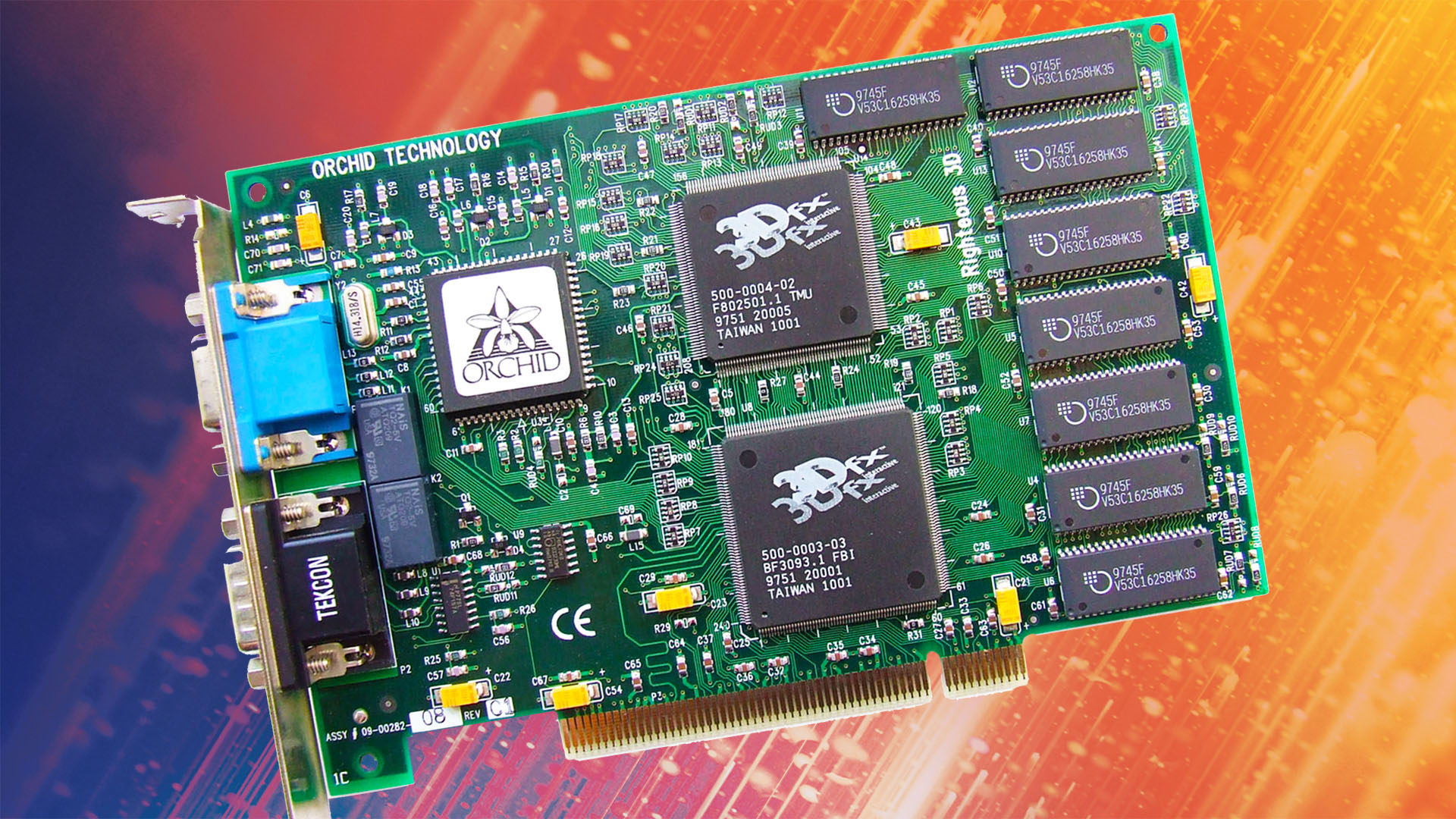
An Orchid Righteous 3dfx Voodoo graphics card, which required a VGA analog loopback cable
3dfx wasn’t using tile-based rendering, and its Voodoo cards used a Z-buffer to solve the visibility problem. It’s a situation that not only meant Voodoo cards had to use loop-back cables, but they also had to allocate some of their frame buffer memory to the Z-buffer. That’s why 1st-gen Voodoo cards are limited to 16-bit color at 640 x 480, while PowerVR cards could go higher.
‘If you turn off Z-buffering, which means a lot of messing around in software, 3dfx could get at 800 x 600 in 16-bit,’ says Fenney, ‘but we were streaming at 24 bits per pixel.’ One area where 3dfx had the upper hand was system requirements. You could get decent performance from a Voodoo card with an Intel Pentium 90, but a PowerVR card needed a beefier CPU to get the most out of it.
PowerVR in the Sega Dreamcast
PowerVR was on a roll, and it had caught the eye of Sega while it was developing the Dreamcast. ‘I remember being in a couple of meetings, saying it does this and this, and they just looked at us thinking, “That’s not possible,”’ says Fenney. ‘There was a great deal of excitement. We were adding texture compression. We had hardware ordering-dependent translucency, which is still difficult to do now.’
What’s hardware ordering-dependent translucency? ‘If you ever have to write a game where you have lots of layers of translucent objects, which are in random order on the screen, you have to make sure you do them in back-to-front order,’ says Fenney.
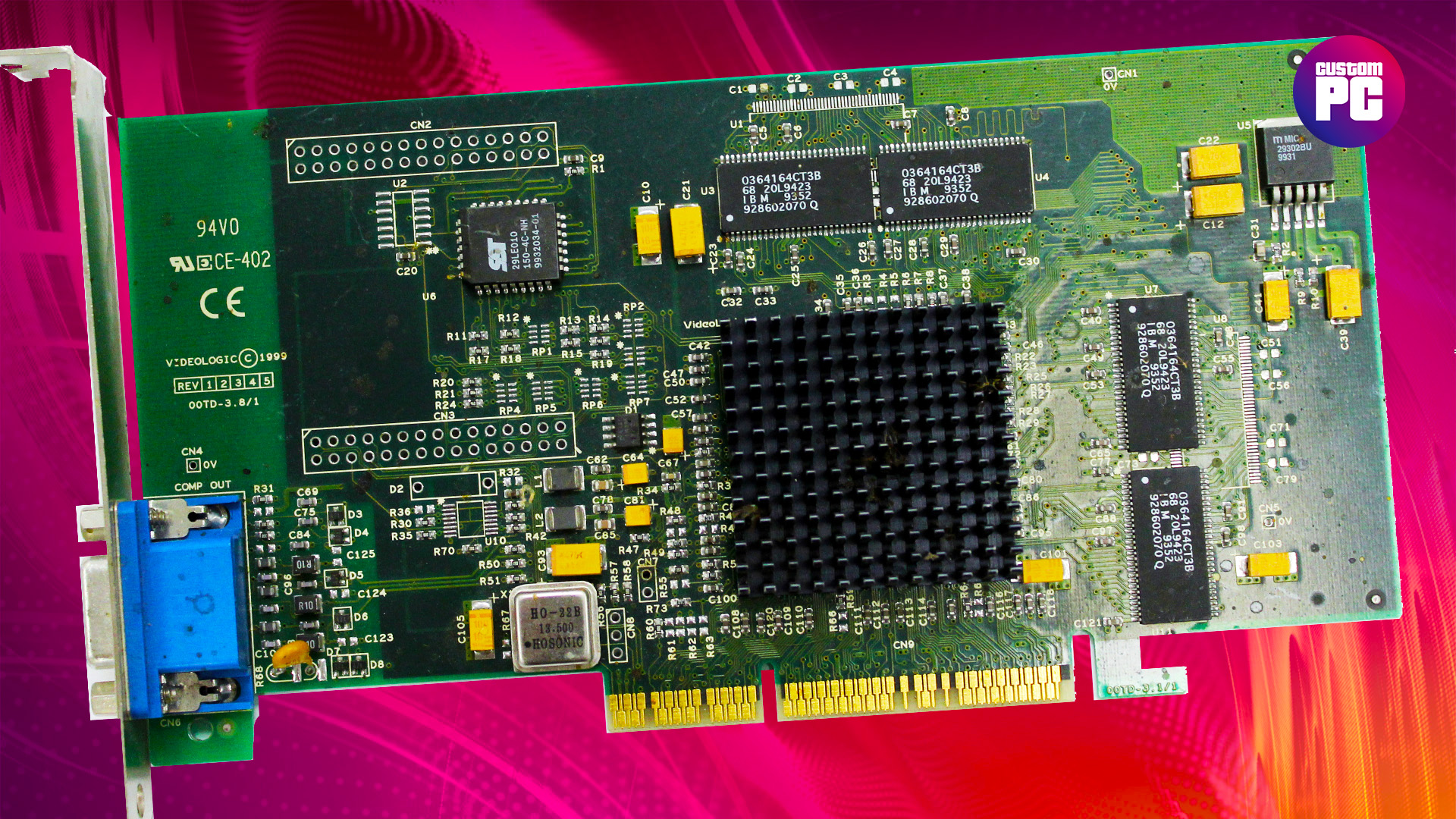
The PowerVR Neon 250 was based on some of the tech in the Sega Dreamcast
Beets informs Fenney that these days developers write a quick sort in a shader program to deal with it. ‘No! Yuck!’ he responds. ‘It was funny watching some people trying to port the Dreamcast games onto, say, the PlayStation. You’d see the early examples, and all the translucency would be wrong, because the games were designed with the hardware doing it all for you. It did help that we had control over the API, because DirectX was kind of limited to Z-buffer rendering.’
The next PowerVR PC product was the PowerVR Neon 250, based on some of the Sega Dreamcast graphics hardware, and an all-in-one 2D/3D AGP card. ‘The original version of the Neon product had no fan on it, and we found it really hard to sell in 1999,’ muses David Harold, VP Marketing Communications. ‘People basically thought, well it has no fan so it must be underpowered compared to Nvidia. So the next version of the board had a fan on it, which was the cheapest fan we could find in China, because it’s essentially cosmetic.’
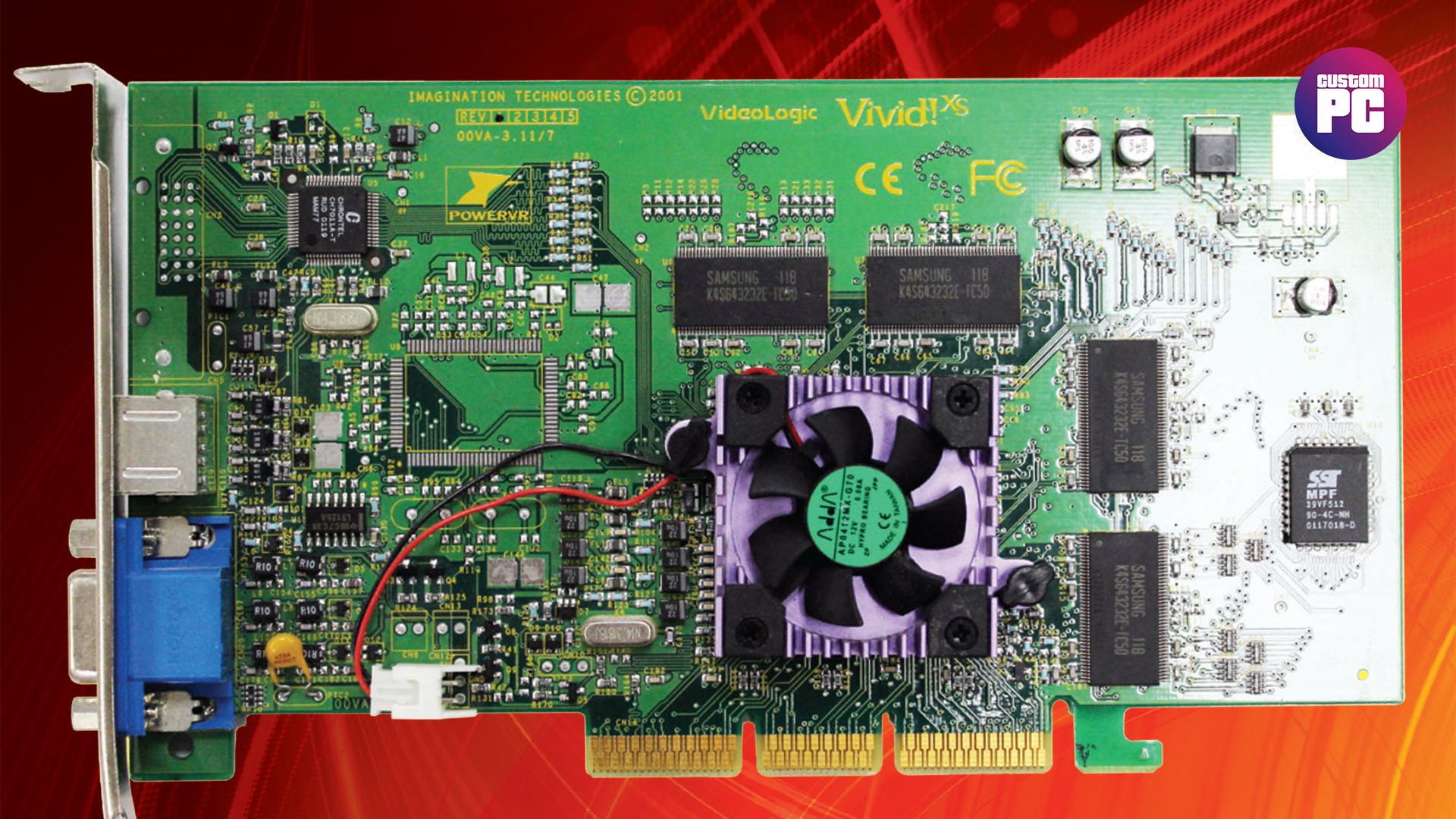
VideoLogic’s Vivid! Card – based on the 1st-gen Kyro chip
PowerVR Kyro
The final push for PowerVR on the desktop PC was the Kyro graphics card series. Fenney laments that the Kyro series saw hardware ordering-dependent translucency removed from hardware. The industry was moving towards standardized APIs, rather than proprietary ones, and that meant compromising on some hardware features.
‘We’d say, “We’re doing translucency sorting” to DirectX developers and some would say, “What? No, that’s not possible.” Others said, “Yeah, it would be great to use it, but there are cards that can’t possibly use it, so we’re not going to develop for it.”’
Kyro also saw the introduction of PowerVR’s ‘perfect tiling’ technique. ‘We figure out exactly which tiles that an object is in,’ explains Beets. ‘What our competitors do is bounding boxes, but a box covers a lot more area than a triangle.’ Next came the Kyro2, with a die shrink and an increase in clock speed. I reviewed the Kyro2 when it came out. It wasn’t as quick as Nvidia’s top-end GeForce2 chips, but it happily beat the GeForce2 MX’s performance for a similar price.
Nvidia wasn’t happy, and briefed industry partners against Kyro2. A leaked PowerPoint presentation showed Nvidia lambasting Kyro2’s driver support, rendering quality, Z-buffer issues, as well as its lack of hardware transform and lighting. The presentation’s conclusion was damning: ‘Buying Kyro2 is a risk – and when cards and PCs get returned, it damages your finances and your reputation.’ Understandably, there’s not a great deal of love for Nvidia among the PowerVR folks.
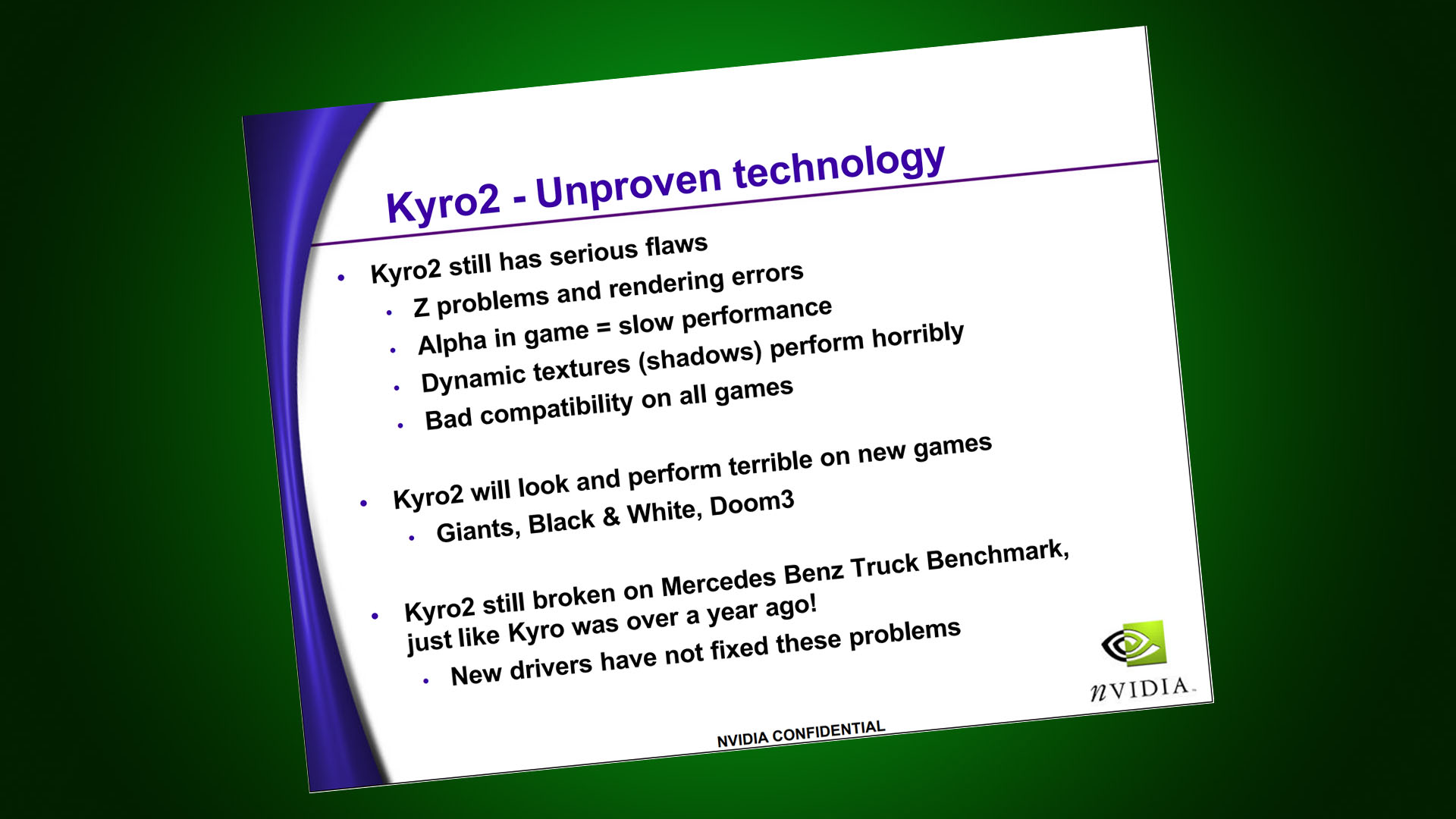
PowerVR leaves the desktop PC
I ask why we’ve never seen a PowerVR desktop product since the Kyro2. ‘We were very nervous,’ says Harold. ‘We looked at the market, and thought, “There are five console makers, and Panasonic is going to be out of this business in five minutes, then there’s going to be four, and some day there will be three. And in every generation you have to win a slot.”
‘After Dreamcast, we talked very seriously about doing a console with somebody else, and realized that every single engineering resource we had would have to go on that project. Then, if we lost that slot to whoever in the next generation, we would have no customers.
‘It’s the same with the PC market. When we started, there were 50+ companies making devices for PC boards, and that figure was shrinking – not yearly; it was practically shrinking weekly. We looked at the market and just thought, If we keep going after PC and console, we’re never going to have enough customers to make our business resilient. ‘At the time, we said that one day we’d come back to those markets, but ultimately, you’re driven by what your customer wants to make.’
Sadly, we no longer have such a wide spread of companies making PC graphics hardware, but if you’re looking to upgrade to one of the latest Nvidia or AMD GPUs, make sure you read our full guide to the best graphics card, which takes you through all the best options at a range of prices. One of our current favorites at the budget end of the scale is the AMD Radeon RX 7600.
We hope you’ve enjoyed stepping down memory lane with us for this chat with Imagination Technologies about the early days of 3D graphics acceleration. For more articles about the PC’s vintage history, check out our Retro tech page, and take a look at this feature about the first Nvidia GPU, the GeForce 256.
